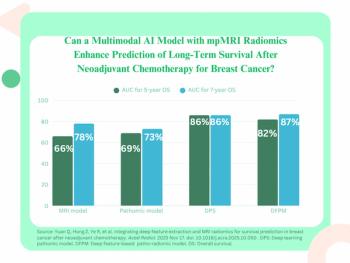
Pro football player concussion study leads parade of physiological neurorad research at 2009 RSNA meeting
The evolution of neuroradiological research from anatomy to biochemistry can be seen in the frequency with which MRI techniques have led to research that will be presented at the 2009 RSNA meeting. Nearly all of the hottest papers this year employ some form of physiological or metabolic imaging.
The evolution of neuroradiological research from anatomy to biochemistry can be seen in the frequency with which MRI techniques have led to research that will be presented at the 2009 RSNA meeting. Nearly all of the hottest papers this year employ some form of physiological or metabolic imaging.
These techniques expand the horizons of medicine because most chronic, degenerative, metabolic, and inherited brain diseases demonstrate few anatomical findings, according to Dr. Mauricio Castillo, chair of the RSNA neuroradiology scientific committee.
"These very sensitive techniques have allowed us a glimpse into the true nature of diseases previously thought to be purely ‘psychiatric' in a nature," Castillo said in an e-mail response to questions from Diagnostic Imaging. "As they evolve and we are able to combine them with anatomy and, importantly, with genomic alterations, we should have a very powerful set of tools that will allow us to identify, detect, and follow up on disorders of which little is understood today."
Radiologists can look forward to several blockbuster papers sure to draw attention far beyond McCormick Place. No paper at the entire conference is likely to generate more interest or possible controversy than a study using T1 MRI and diffusion tensor imaging to identify brain atrophy among retired National Football League players.
Dinggang Shen, Ph.D., an associate professor of radiology at the University of North Carolina, served as senior researcher for the study, associated with the university's sports concussion research program.
Kevin Guskiewicz, Ph.D., who also contributed to the study, oversees the concussion research program at UNC. He first drew interest to football-related concussions and dementia in 2005 with a study suggesting that a history of three or more concussions was associated with an increased risk of cognitive impairment by age 50. His group's survey of 2552 retired professional football players in 2007 revealed that they had a 37% higher risk of getting Alzheimer's disease than other men their age.
Guskiewicz's research came to the attention of the public again in an Oct. 19 investigational report published in The New Yorker magazine. In it he describes direct physical measures of head blows experienced by University of North Carolina football players. His research indicates that concussive blows are extremely common.
The same article describes a postmortem pathological study that found high levels of tau protein in the brains of former football players diagnosed with dementia before their deaths. Tau protein is considered a primary suspect in the neurological damage associated with Alzheimer's disease and other dementias.
Shen's in vivo MRI exams of retired NFL players, to be reported at this year's RSNA meeting, are sure to add to the base of knowledge about the long-term health implications of such injuries.
Other physiological studies scheduled for presentation this year will address other politically charged issues as well. Torture and brain injury among Vietnamese former political detainees is the subject of research to be presented Wednesday by Dr. Young-Hoon Sung and collaborators from the Brain Institute at the University of Utah. Sung used proton MR spectroscopy to detect and evaluate metabolite abnormalities in the subjects, who suffered brain injuries during torture.
Dr. Jason Druzgal, a body imaging fellow at the University of Utah, will be awarded a Fellow–RSNA Trainee Research prize for his research on the pathophysiology of autism. Druzgal employed BOLD fMRI on a 3T scanner to test the validity of theories of autism by comparing connectivity patterns in the brains of autistic patients and normal volunteers.
Several papers from investigators in Beijing will present research using diffusion-weighted MRI to describe brain damage caused by carbon monoxide poisoning. An fMRI study to be presented by Chinese researchers investigates interactions between neural structures inside the corticostriatothalamic neural circuit for new insight into the cause of stuttering.
Dr. Maximilian Reiser's group at the University of Munich in Germany employed diffusion tensor imaging in a new imaging protocol that shows promise for differentiating high-grade gliomas from brain metastases. Dr. Michael Lev and colleagues at Massachusetts General Hospital will present findings suggesting CT perfusion imaging can predict the degree to which stroke patients with aphasia will regain their power of speech.
And to challenge anyone who claims that life begins after age 50, Dr. Shamseldeen Mahmoud and colleagues at Cleveland Clinic will present a diffusion tensor imaging study that concludes human reach their cognitive peak during their forties and then experience a gradual white matter decline in their brains for the rest of their lives.
Newsletter
Stay at the forefront of radiology with the Diagnostic Imaging newsletter, delivering the latest news, clinical insights, and imaging advancements for today’s radiologists.




























